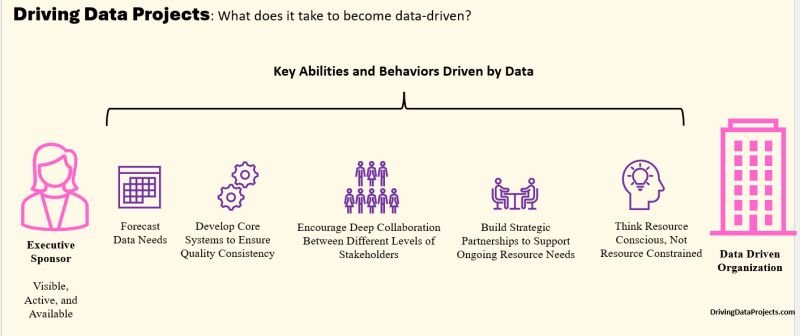What does it take to become Data-Driven?
Since most people don’t know a lot about IT organizations or data teams it’s important to understand why moving from ad hoc efforts to a mature approach to driving data projects makes sense. The timing might not be right (now). Becoming data driven through data as a service requires a serious investment of resources, finances, staff, equipment, services, etc.; scaling efforts will only increase those topline demands. It’s a serious ongoing commitment many organizations find themselves surprised by—even today.
BENEFITS FROM A REPEATABLE APPROACH
🎯Accomplish more with less.
🎯Engaging sponsorship to tap into deeper planning with the business
🎯 Overcome challenges and increase support for data driven decision making by exposing extended stakeholders to tools, resources, and support.
🎯Reduce costs by centrally consolidating the highest priority process, platforms, and data with federated efforts in each business unit.
However, moving from ad-hoc data to operationalized efforts requires a complete mindset shift about how data is consumed. Cultural shifts like these can take years.
KEY ABILITIES AND BEHAVIORS DRIVEN BY DATA
🥠1️⃣ Forecast Data Needs
Constantly look ahead six to twelve months to operationalize data requirements. Develop a thoughtful, vetted list of data projects ready to map to existing resources and quantify headcount requests.
🥠 2️⃣ Develop Core Systems to Ensure Quality and Consistency.
Leverage existing systems to manage all aspects of the data supply chain. Track what is in and outside the core architecture and determine if/how it should be included. Ensure stakeholders feel valued. Train them on data supply chain and reporting tools so they can evangelize the value of data-driven activities in the business. Maintain a record of all projects (and their impacts).
🥠3️⃣ Encourage Deep Collaboration Between Sponsors, Working Group, and Data Team.
Sponsors, working groups, and the data team are true partners in scoping, resourcing, and managing data projects. Each has clear roles and responsibilities to be successful.
🥠4️⃣ Build Strategic Partnerships to Support Ongoing Resource Needs.
Develop strong partnerships with organizations for the long game. Partnerships fulfill a variety of needs—budget contribution, resource alignment/allocation/sharing, committee participation, and sounding boards for advice.
🥠5️⃣ Think Resource Conscious, Not Resource Constrained.
Be opportunistic about using stakeholder resources, but don't forgo the areas of strategic importance that warrant topline investment instead. For all data projects, first consider alternative approaches. The starting lineup comes from the data team, but employees from other groups are just one ask from becoming included. The key is not securing resources; it’s figuring out how to get folks included and in the game.
An active and visible sponsor is the defining contributor to successful change.
What are some other characteristics of becoming data-driven?
